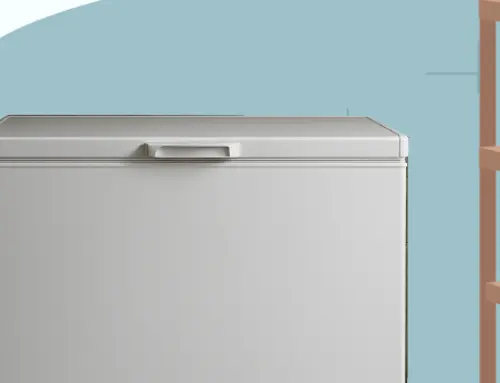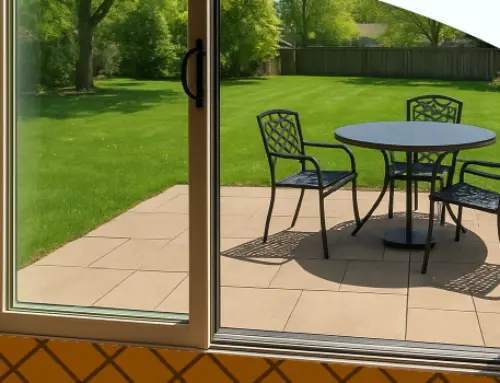Why is My Refrigerator Not Cooling?
by Tyler Castle
10.5 min read
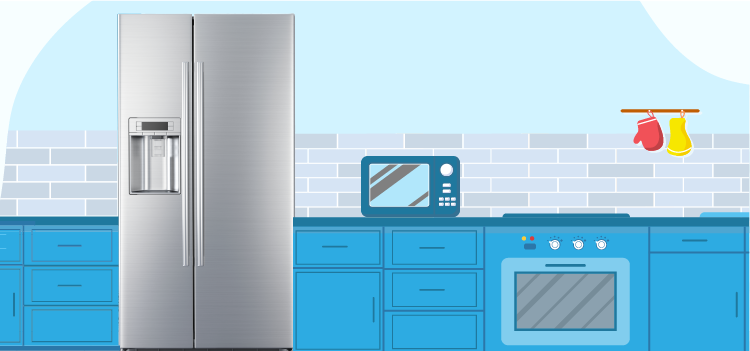
Ah, the humble refrigerator—your late-night snacking partner, the guardian of leftovers, and the hero of hot summer days. But what happens when your trusty fridge decides to take a break? You open the door, expecting a cold blast, but instead, you’re met with a lukewarm breeze. Cue the panic! Before you rush to buy a new one or go into full-on meltdown mode, let’s break down why your refrigerator isn’t cooling.
Why is my refrigerator not cooling?
There are several reasons why your refrigerator might not be cooling. Here are some common problems that might cause this issue:
- Dirty Condenser Coils: If the condenser coils are covered in dust and debris, they can’t effectively dissipate heat.
- Faulty Evaporator Fan: A malfunctioning evaporator fan will prevent cold air from circulating inside the fridge.
- Malfunctioning Thermostat: If the thermostat isn’t working, it might not signal the compressor to kick in, causing your refrigerator not cooling to the desired temperature.
- Blocked Air Vents and Ducts: When air vents or ducts are blocked, cold air can’t circulate.
- Wrong Temperature Setting: Setting the temperature too high or too low can result in a refrigerator not cooling as it should.
- Full of Items Inside the Refrigerator: Overpacking the fridge can block air vents and restrict airflow, resulting in a refrigerator not cooling evenly.
- Fridge Location: If your fridge is placed too close to heat sources or is not adequately ventilated, it can struggle to maintain proper cooling.
- Dirty Door Seals: Accumulated grime can prevent the door from being sealed properly.
- Broken Door Seals: Damaged seals can cause cold air to leak out.
- Unlevel Fridge: An unlevel fridge can cause the coolant to circulate improperly, resulting in a refrigerator not cooling consistently.
- Loose Plug: A loose power connection can intermittently cut off electricity, causing your refrigerator not cooling steadily.
- Power Source Switched Off: If the power source is off, your refrigerator won’t cool.
- Faulty Circuit Board: The circuit board controls various functions of the fridge.
How to identify your cooling problem
When your refrigerator isn’t cooling, identifying the cause is the first step towards a solution. Here are key areas you should inspect to determine the source of the problem:
Inspect the Condenser Coils: Dirty or dusty condenser coils in the back of your fridge can cause cooling issues from your refrigerator.
Test the Evaporator Fan: A faulty evaporator fan could be why your refrigerator is not cooling. Ensure it is running smoothly and circulating cold air throughout the compartments.
Examine the Air Vents and Ducts: Blocked air vents and ducts can obstruct airflow.
Check for Refrigerant Leaks: Refrigerant leaks can be caused by corroded refrigerator coils which are common in humid climates. Other factors like damage during maintenance or installation might cause refrigerant leaks leading to cooling problems in your unit.
Inspect Your Doors: Check the door seals for any signs of wear, cracks, or tears. Damaged seals can prevent the door from closing tightly, allowing warm air to seep in and cold air to escape.
How to troubleshoot and fix a refrigerator that isn’t cooling
Before you consider consulting professionals, there are some issues you might be able to troubleshoot on your own with a DIY solution:
- Ensure your refrigerator is properly plugged in and that the outlet is functioning. A faulty plug can cause your fridge to not cool properly without you even knowing.
- Verify the thermostat setting and functionality. If it’s not functioning, it might need to be replaced. Use the screwdriver to remove the control panel cover. With the multimeter, test the thermostat for continuity. If it’s not functioning, it may need to be replaced.
- Dirty condenser coils can cause the refrigerator to lose cooling efficiency. Coils should be cleaned at least once a year. Use the flashlight to locate the condenser coils, usually at the back or underneath the fridge. Use a shop vacuum, brush, or rag to remove dust and debris.
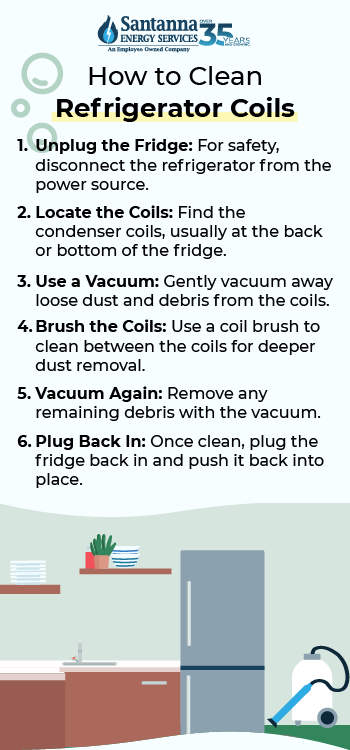
- Ensure the evaporator fan is running smoothly. Unscrew the panel covering the fan using the screwdriver or nut driver. Check the fan’s motor with the multimeter to ensure its receiving power. If the motor is faulty, it will need to be replaced.
- A loose or damaged door seal can let cold air escape, reducing the refrigerator’s efficiency. Clean the door seals with a soft cloth and cleaning solution. If the seals are dry or stiff, apply silicone lubricant to keep them flexible and ensure a tight seal.
- Clogged filters or low refrigerant levels can be the root of cooling problems. Replace the water or air filters according to the manufacturer’s instructions. If the refrigerant is low, you may need to consult a professional to refill it, but you can use compressed air to clear dust from components.
If any of these issues persist or cause safety concerns to you and your household, stop what you’re doing and call a professional.
Who fixes a refrigerator: when to call a professional to fix a refrigerator that doesn’t cool
- Refrigerant Leaks: Refrigerant is the substance that cools the air inside your refrigerator. A leak can result in inadequate cooling and is not something that should be handled without proper training.
- Compressor Issues: The compressor is the heart of your refrigerator’s cooling system, responsible for circulating refrigerant through the coils. If the compressor fails or malfunctions, your refrigerator won’t cool.
- Electrical Problems: Electrical issues can cause a range of problems, from the refrigerator not cooling to it not turning on at all. Given the risk of electrical shock and the complexity of diagnosing these issues, it’s best to leave electrical repairs to a trained professional.
- Faulty Thermostat: If it’s faulty, your fridge may not maintain the correct temperature, leading to inconsistent cooling or freezing.
- Evaporator or Condenser Fan Problems: Fans are crucial for moving cold air throughout the refrigerator and releasing heat from the back of the unit. If the evaporator or condenser fan fails, the refrigerator won’t cool efficiently.
- Severe Frost Build-Up: Frost build-up can indicate problems with the defrost system, such as a faulty defrost heater, thermostat, or control board. These issues can prevent your refrigerator from cooling properly.
- Unusual Noises: Identifying the source of the noise and fixing it often requires specialized tools and knowledge, making it a job for a professional.
- Inconsistent Temperature: If your refrigerator is experiencing temperature fluctuations, it can lead to food spoilage. This problem might be caused by malfunctioning sensors, a failing compressor, or other internal issues.
- Water Leaks: Water leaking from your refrigerator can indicate a clogged or frozen defrost drain, a broken water inlet valve, or a cracked water line.
- Door Seal or Gasket Issues: If your refrigerator door isn’t sealing properly, it can lead to cold air escaping and warm air entering, resulting in poor cooling performance.
If you’re unsure who fixes refrigerators in your area, look for certified technicians or services specializing in appliance repair. For larger units, you might need a specialist to fix commercial refrigerators.

How long does it take for a refrigerator to cool?
Once you have identified and fixed the issue, you may wonder, how long does it take for a refrigerator to cool down to its optimal temperature? On average, it takes about 24 hours for a refrigerator to stabilize after being turned on, depending on the model and external conditions.
On most modern models, you can feel a difference in temperature within 2 hours. We recommend waiting the full 24 hours before putting food back in your fridge to ensure that the appliance has had sufficient time to return to its optimal operating temperature.
How long food stays good in a fridge that won’t cool?
When your refrigerator is not cooling, you’ll need to be cautious about food safety. Typically, food can stay safe in a non-cooling refrigerator for about 4 hours, provided the door remains closed. After that, perishable items like meat, dairy, and leftovers should be discarded to prevent foodborne illnesses.
Only open the doors when necessary to maintain the cool air inside. If you’re unsure about the food you’ve taken from a malfunctioning refrigerator, it’s safer to discard it to prevent illness.
How a malfunctioning fridge affects your home’s overall energy efficiency
A fridge that isn’t cooling can taint the overall energy efficiency of your model. Like any appliance, the harder your unit has to work on a daily basis, the more energy it uses per day to keep itself running. This is especially important to keep in mind for refrigerators since they run all the time.
A malfunctioning fridge not only consumes more electricity but also causes temperature fluctuations, leading to food spoilage and wasted resources. When the appliance struggles to maintain a consistent temperature, this can lead to inconsistent energy consumption. Similarly, excess energy consumption increases your home’s carbon footprint.
Signs you need a new refrigerator
Even if you’ve tried all these techniques and your refrigerator still isn’t cooling, it might be time for a new model. Here are a few signs a new fridge might be in your future:
- Expensive Repairs: If the repair costs are high, especially for major components like the compressor, it may be more economical to buy a new refrigerator.
- Frequent Breakdowns: Multiple small repairs over time can add up, and at a certain point, replacing the fridge becomes more practical.
- Old Age: If your refrigerator is more than 10-15 years old, it’s likely less energy-efficient and more prone to problems, making replacement a better option.
How long do refrigerators last?
Refrigerators last an average of 12 years depending on usage and maintenance. Regular cleaning, avoiding overloading, and promptly addressing issues can extend its life.
Tips to avoid temperature issues
The FDA recommends that refrigerators be at 40 degrees Fahrenheit or lower. On the other hand, freezers should be set at 0 degrees Fahrenheit or lower. Keeping your refrigerator at a consistent temperature can help avoid issues later.
Stocking your fridge too tight can also cause temperature issues. Refrigerators need to have enough mass to retain cooler temperatures. Try to keep your refrigerator about three-quarters full of food and beverages. However, you are encouraged to apply the opposite principle to freezers.
If you have pets, you should consider pulling the refrigerator out and cleaning the coils. The more hair that’s trapped around your coils, the less efficient they work.
When using your refrigerator, it is essential to ensure that you close the doors securely each time you open them. When the fridge door is left ajar, cold air escapes, causing the internal temperature to rise.
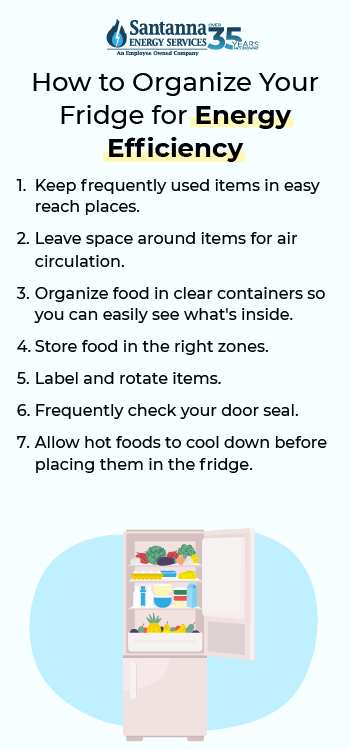
Identifying the root cause early is essential to maintaining your appliance’s efficiency and preventing costly repairs or food spoilage. Regular maintenance, proper airflow, and ensuring that your fridge’s components are functioning optimally can help avoid cooling problems and maintain your home’s energy efficiency.
FAQs
Should I unplug my refrigerator if it’s not cooling?
Yes, it can be a good idea to unplug your refrigerator if it’s not cooling properly. When a refrigerator fails to maintain the appropriate temperature, it can lead to food spoilage and potential health risks due to the growth of bacteria.
When should I turn down the temperature in my refrigerator?
You should turn down the temperature in your refrigerator if it’s warmer than the recommended 40 degrees Fahrenheit. However, turning it down should only be done after checking if the fridge is well-ventilated, not overloaded.
If your fridge continues to struggle with maintaining its proper temperature, adjusting its temperature might not be enough and professional help will be needed.
Why is my refrigerator not cooling but my freezer is?
If your refrigerator is not cooling but your freezer works, it’s likely an issue with the airflow between the freezer and fridge compartments or your temperature control settings. You might benefit from looking into your evaporator fan, air vents, and defrost system as these components might be causing the issue.
There’s peace of mind in knowing you’ll pay the same monthly supply cost amount for your electricity or natural gas supply without any uncertainty — no matter what. Santanna’s Unlimited Energy option protects your bills from fluctuating supply charges no matter the changes in seasons. For over 35 years, Santanna has served customers in Illinois, Indiana, Pennsylvania, Michigan, and Ohio. Our mission is to provide innovative and cost-effective energy solutions that will help our customers achieve their energy goals.
Tyler is an experienced energy professional, having worked for Santanna Energy Services, for the past four years. He is passionate about renewable energy and believes that diversifying the energy grid is the key to a sustainable future. Tyler is dedicated to supplying consumers with the best possible energy solutions and works diligently to make sure that Santanna can deliver the highest quality service.



